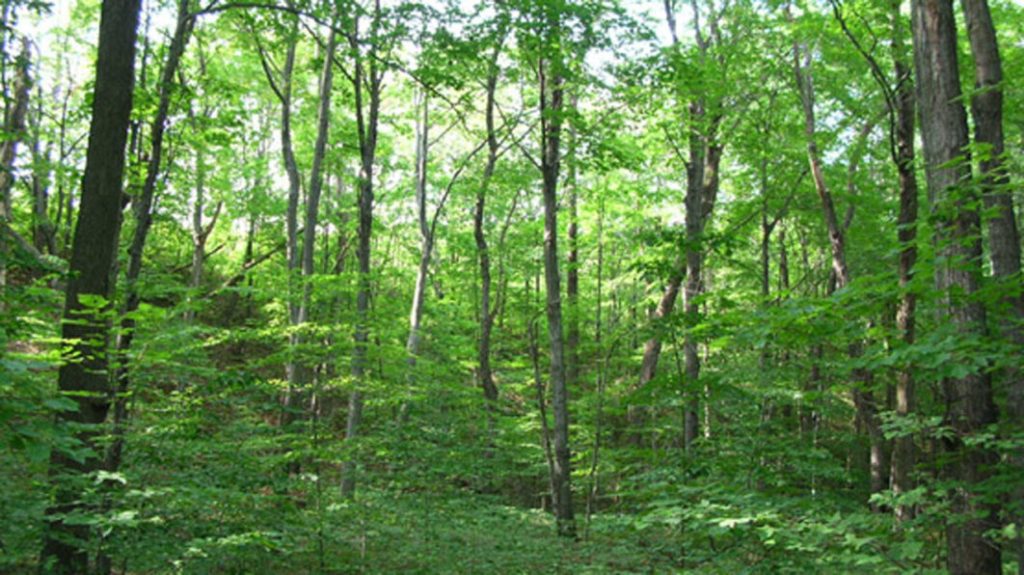In the ever-changing world of farming, where nature meets the plow and the seed, forests and agriculture join forces in a crucial dance. This journey takes us through the green wonders of forests and their profound connection with farms. It’s more than just tall trees and fertile fields; it’s about a delicate balance shaping our entire ecosystem. The Food and Agricultural Organisation (FAO) of the United Nations has described forests as lands of more than 0.5 hectares with a tree canopy cover of more than 10 per cent, which are not primarily under agricultural or urban land use.
This article sheds light on the dynamic relationship between forests and agriculture. We’ll explore how forests actively contribute to soil health, water conservation, economic well-being, and the fight against climate change. Along the way, we’ll navigate challenges threatening this delicate balance. As we explore, we won’t just scratch the surface, but dig deep into the rich soil of understanding. It’s a chance to plant seeds of awareness about the vital role of forests in the intricate dance of agriculture. Let’s look beyond leaves and branches, uncovering the profound connection below ground, where tree roots mingle with the intricate network of life.
Forests’ essential role in agriculture
In this intricate dance, forests go beyond mere beauty; they conduct a complex symphony of life. Trees are not passive observers; they actively contribute to agriculture’s vitality. Their extensive roots anchor the soil, preventing erosion and creating an environment for robust crops. The biodiversity within the forest; home to countless plants, animals, and microorganisms that creates a balanced ecosystem, impacting nearby farms. Digging into the soil, we find roots forming a network that helps nutrient exchange and water retention. The forest canopy provides shade, regulating temperature and conserving water. This is a teamwork where the forest is not just a habitat, but also nurtures the foundation of agriculture; healthy and fertile soil.
Forests, silent heroes against climate change
Imagine forests as silent superheroes fighting climate change. Their superpower? Absorbing and storing vast amounts of carbon dioxide, a greenhouse gas causing global warming. Trees breathe in carbon dioxide during photosynthesis, storing it in trunks, branches, and roots. This carbon storage, or carbon sequestration, plays a crucial role in fighting climate change.
Sustainable forestry practices are the hero’s toolkit. Selective harvesting and replanting keep the cycle of carbon absorption and release going. This preserves the forest’s ability to act as a carbon sink and ensures a sustainable timber supply without harming the environment. It’s a dynamic partnership where the forest becomes a frontline defender against climate challenges.
Agroforestry: Beneficial cooperation
Entering the world of agroforestry, we witness a collaboration transforming the agricultural landscape into a harmonious tapestry of trees and crops. Agroforestry isn’t just a strategy; it’s a dance where trees and crops complement each other by benefiting both the environment and farmers.
Picture fields with rows of crops and strategically planted trees. Trees provide shade, reduce sunlight impact on crops, and enhance soil structure with their roots. Leaves falling contribute organic matter, enriching the soil and promoting biodiversity. Windbreaks stand as protective guardians at field edges. These lines of trees shield crops from strong winds, preventing soil erosion and creating a microclimate for optimal growing conditions. Hence, farmers should enjoy increased crop yields, and the environment benefits from enhanced biodiversity and soil health.
Economic pillars for local communities
Beyond the ecological dance, well-managed forests become economic lifelines for local communities. Sustainable timber harvesting, done responsibly, opens avenues for economic prosperity for the economic impact goes beyond timber. Non-timber forest products like medicinal herbs, fruits, nuts, and resins play integral roles in this economic symphony. The forest offers diverse products, and harvesting them sustainably generates income while conserving biodiversity. Agroforestry initiatives diversify economic opportunities. Cultivating high-value tree crops alongside traditional crops creates a resilient income stream. The marriage of agriculture and forestry becomes a source of financial stability for local communities.
Forests as protectors of agriculture
Forests, as natural shields, guard against threats to agricultural lands. Tree roots anchor the soil, preventing erosion during heavy rainfall. The forest canopy acts as a protective shield, reducing the impact of rainfall on the soil and minimising runoff. During severe weather events, well-managed forests act as resilient barriers. Their dense canopy and robust root systems shield agricultural lands from strong winds and heavy rains, preventing soil loss and maintaining field integrity. It’s a testament to the protective role forests play in bolstering agricultural resilience.
Navigating challenges: balancing forests and agriculture
Navigating the delicate dance between forestry and agriculture comes with challenges testing this intricate relationship. Conflicts over land use, with timber demand competing with farmland needs, arise. Integrated land-use planning offers hope by strategically combining forestry and agriculture for a harmonious balance.
Deforestation, fueled by expanding agriculture, is a looming challenge. Sustainable forestry certification and responsible land-use policies emerge as powerful tools to curb deforestation. These initiatives ensure forests are managed to preserve ecological integrity while meeting essential agricultural needs while community-based forest management adds another layer. Empowering local communities to sustainably manage forests ensures ecosystem health and addresses economic needs. It’s a collaborative approach where communities become stewards of the land, fostering responsibility and connection to the forests they call home.
Closing thoughts on harmony in nature’s symphony
As we emerge from wooded realms and cultivated fields, let this article be a guide and an ode to the ecological partnership in quiet corners of nature and vast expanses of agriculture. May it resonate with readers, encouraging them to appreciate the delicate dance between forests and farming, a dance that sustains not only the land, but the essence of life on our planet.



